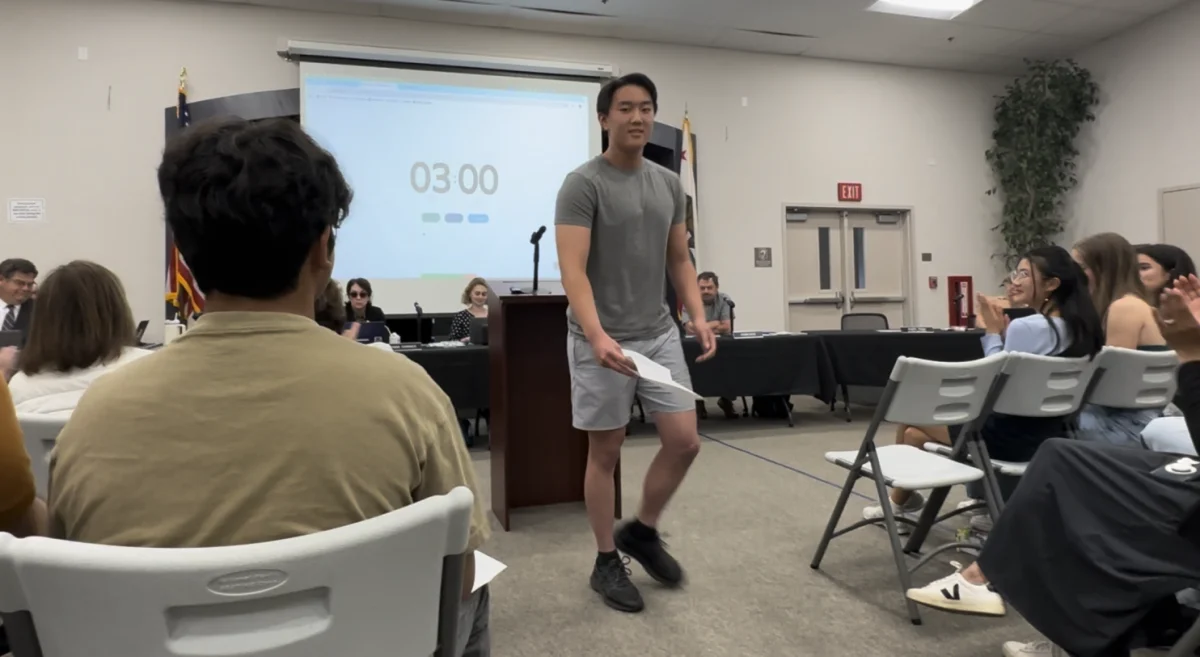High school students naturally like to compare grades, especially in competitive honors and AP classes where the bar is set high. Students are just curious to know if they are the ones that scored the best (or the worst). This all comes at a heavy price. The major consequences of comparing grades are disappointment at underperforming, satisfaction at being “the best” or lack of motivation to fix any mistakes if students performed just as well as their peers.
None of these consequences support the fact that tests exist to evaluate a student’s understanding of a subject and give feedback on what a student needs to improve on. Instead, having the grade written on the test and visible for peers to see while the teacher hands it back only discourages students from trying to understand what they got wrong. With control over their private SIS account, students are able to view their scores on their own and then choose to compare with classmates at their discretion.
Math teachers Carol Evans and Matt Chaffee began privatizing students’ test grades in their Algebra II Honors and regular classes halfway through last year. In the Algebra II Honors and regular classes, students’ final grades are not written on tests handed back; only “x” marks are written on the paper to indicate what the student needs to correct. After students make their corrections, they turn the test back in to receive any possible curve points. The only way to view their final score is to log into SIS.
“The grade seems so much like ‘I’m done, this is over,’” Evans said. “No, you’re not there yet. You’re working on it and making good progress, but you’re not there yet. The problem is changing students’ attitudes. A good attitude is wanting to learn the material. A lot of students in honors classes do, but not everybody. Many students say, ‘I just want this A’, and [Chaffee and I] are trying to turn that around.”
Obviously, students can still compare their scores after viewing them on SIS and defeat the purpose of not handing grades back immediately.
“Certainly, people can ask you for your score, but then it’s your option whether to compare or not,” Evans said. “If [the score is] sitting on that desk and Joe is sitting next to you, and he says, ‘Whadya get?’ it’s hard not to say, ‘B+’ whereas if you get the scores online, you can make lots of reasons to say ‘I haven’t looked at it yet’ or “Oh you know I looked a week ago, and I forgot my grade.’ You have more control over whether you share or not.”
Without grades to compare in class, students can spend time used to compare grades on actually going back to figure out what they missed and why. Added to the fact that students only gain the curve if test corrections are completed, the motivation to seek out mistakes and straighten out concepts soars.
“This [time] is your chance to interact with your peers,” Evans said. “That doesn’t happen as much outside of class time, so [students can] share grades outside of the classroom on your time, but I don’t want it done on my time, instructional time.”
Evans first learned about the technique from the book “Embedded Formative Assessment” by Dylan Wiliam. The book discusses several techniques for teachers, one which includes taking the grade off the paper to focus students on how to fix concepts.
Most teachers use the traditional method of handing back tests with grades on them. Math teacher Judy Strauss believes changing her traditional method is worth considering.
“I’m not tied to what I’m doing with [handing scores back] and I’m…considering what and if we should change,” Strauss said. “[The math teachers] are asking, ‘Does it make more sense to privatize grades? Is it better for students? Do students get more out of it? Do the benefits outweigh the pitfalls?’”
The issue with changing the way teachers report grades is that all teachers must be aligned in their methods; because Evans and Chaffee are the only two teachers who teach Algebra II Honors, they have been able to integrate this technique into all their Algebra II Honors classes. Other teachers of the same classes must all agree to change reporting styles before one teacher begins.
Although the grading style requires teachers to record grades and points deducted on a separate sheet from the test, Evans has found no disadvantages to this.
“[Even though] you’re writing all the points down on a separate sheet, it takes about the same time [as traditional grading] and maybe a smidge more but not much more time,” Evans said. “It’s totally worth it.”
If adopted by all teachers, this grade-reporting style will benefit subjects other than math, which is traditionally graded with point-by-point problems and sections. AP Literature and Composition teachers April Oliver and Caitlin Hannon already use grade reporting methods similar to that of Evans’.
In this class, students receive feedback on their written work and a separate sheet of typed comments from the teacher in class. That night, students take the feedback home to look over thoroughly and find areas to work on. The next day, the teacher hands back rubrics with grades to students in class, after students show that they have read and responded to the teacher’s comments.
“We really want students to take time to look through our feedback,” Hannon said. “I have gotten feedback from students saying that because the only thing I’m giving them that day is my feedback and not a grade, it really forces them to go through that feedback carefully, really think about areas of strength and also areas of growth in that piece [of writing].”
This method of reporting differs from the math department’s method in the sense that students can still compare grades in class, but the point of focusing students on correcting their mistakes or improving their work is still reached. Regardless of subject, reporting grades on SIS and returning pure feedback during class really benefits students’ motivation to strive for better work and better understanding of the subject.
School is all about learning; what is there to learn when students lose the motivation when they find out that peers did better or worse? The solution is clear, simple and has been hidden for far too long: get the grade off the paper.
Teachers Should Consider Privatizing Grading
November 5, 2013
Story continues below advertisement
0








